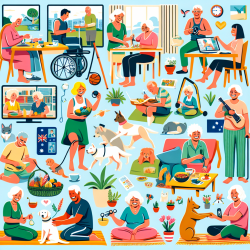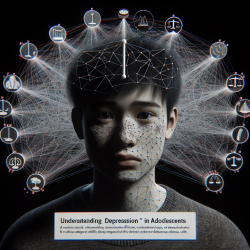Introduction
Diabetic retinopathy (DR) is a serious eye condition that can lead to blindness if not detected and treated early. Despite the availability of treatments, many women in Bangladesh face significant barriers to accessing these services. A recent study, "Understanding the behavioral determinants that predict barriers and enablers of screening and treatment behaviors for diabetic retinopathy among Bangladeshi women," sheds light on these challenges and offers insights for healthcare practitioners.
Understanding the Barriers
The study identifies several key barriers that prevent women from seeking DR screening and treatment:
- Access to Healthcare Facilities: Many women struggle to reach DR service centers due to long distances, poor transportation, and the inability to travel alone, especially during illness.
- Financial Constraints: The cost of transportation and pre-treatment tests can be prohibitive for many women, affecting their ability to seek care.
- Perceived Self-Efficacy: Women often lack confidence in navigating the healthcare system, which is exacerbated by long waiting times and difficulty in locating services.
- Social Norms: Cultural expectations and the need for approval from male family members can hinder women's access to DR services.
- Fear of Treatment: Concerns about pain and discomfort associated with treatments like injections or laser therapy can deter women from seeking care.
Enablers to Overcome Barriers
Despite these challenges, the study also highlights several enablers that can improve access to DR services:
- Supportive Healthcare Providers: Friendly and supportive attitudes from healthcare staff can significantly encourage women to seek treatment.
- Government Policies: Policies that reduce the cost of DR treatments and provide services free of charge can alleviate financial burdens.
- Community Support: Encouragement from family and community members can play a crucial role in motivating women to seek care.
Practical Implications for Practitioners
Healthcare practitioners can play a pivotal role in addressing these barriers by:
- Enhancing community outreach and education to raise awareness about DR and the importance of early screening and treatment.
- Collaborating with local governments to improve transportation options and reduce travel-related barriers.
- Providing culturally sensitive care that respects social norms while encouraging women's autonomy in health-related decisions.
- Implementing reminder systems, such as mobile notifications, to help women remember appointments and follow-up visits.
Conclusion
By understanding and addressing the behavioral determinants of DR screening and treatment, practitioners can help increase the uptake of these vital services among Bangladeshi women. This study provides a valuable framework for designing interventions that are both effective and culturally appropriate.
To read the original research paper, please follow this link: Understanding the behavioral determinants that predict barriers and enablers of screening and treatment behaviors for diabetic retinopathy among Bangladeshi women: findings from a barrier analysis.










